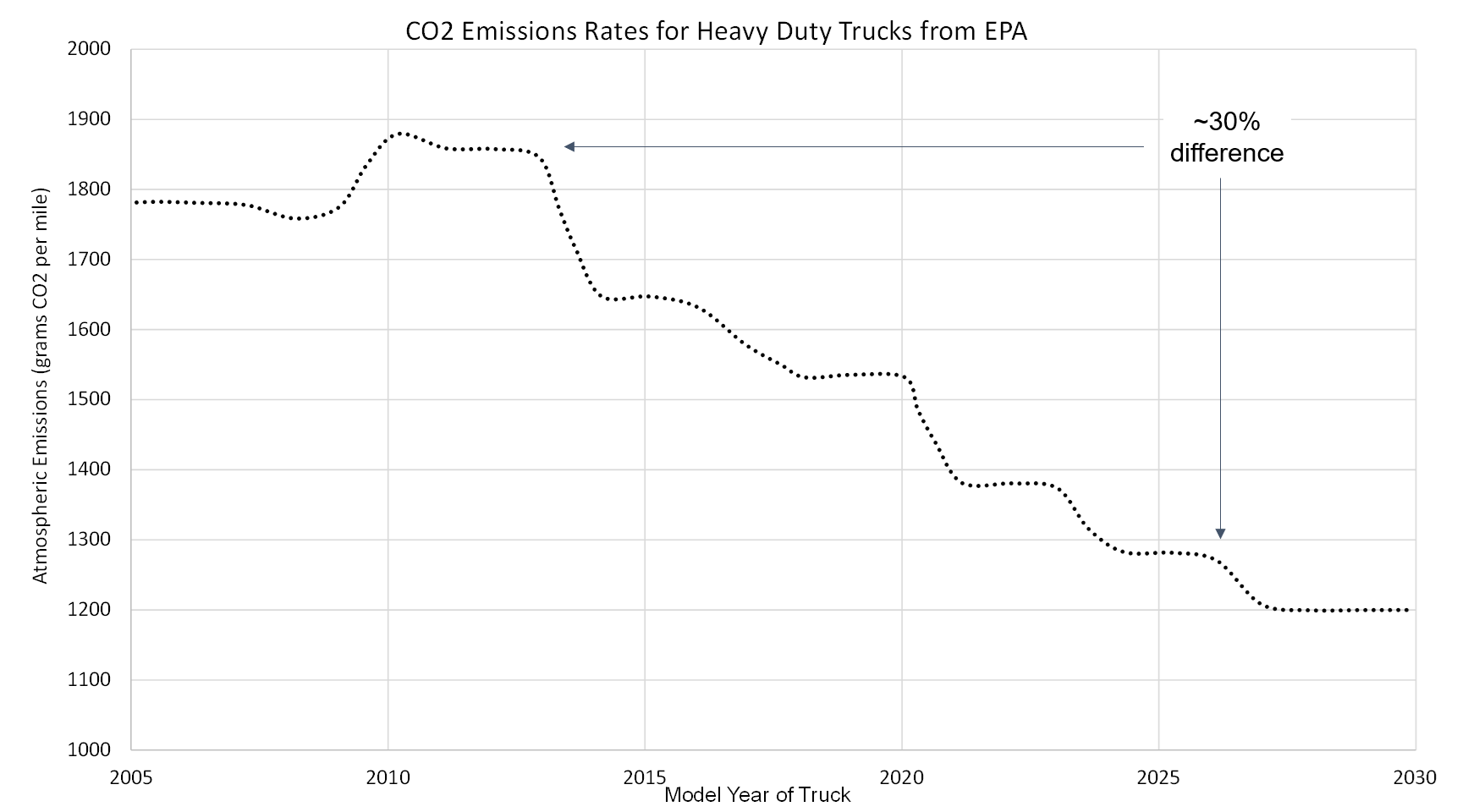Using our three key features: Search Carriers, Examine Equipment, and Calculate Factors, users can model and estimate the truck emissions associated with their supply chain.
Explore a vast database containing hundreds of thousands of carrier emission factors. Tailor your search by filtering based on parameters such as size, location, class, name, fleet type, and more.
Look at detailed data about a carrier's equipment, including truck make, model, model year, class, and other characteristics.
Calculate customized emission factors for carriers based on custom date ranges, truck classes, and other specified factors.
A comprehensive data service offering emissions factors for virtually every trucking fleet (known as carriers) operating across the United States, allowing reporting on fleets from 1 power unit to 100,000+.
These factors quantify the amount of CO2 emitted per mile by carriers, reflecting the equipment utilized in their operations. This invaluable tool empowers users, including shippers, brokers, and third-party logistics providers, to achieve two key objectives:
1) accurately assessing their historical emissions or those of their clients using readily available data such as carrier information and miles traveled, and
2) making informed decisions by selecting and evaluating carriers based on their emissions performance.

Today's trucks differ significantly from those manufactured ten to twenty years ago. Businesses aiming to lessen their carbon footprint require methods to initially establish the current status of their transportation fleet and then tools to determine how to assess this fleet in alignment with their internal objectives. Choosing a carrier with a newer truck compared to one from 2010 could lead to a reduction in CO2 emissions of up to 30%.
For the Shipper, Broker, or 3PL operating in California, you may fall into the category of someone who may be required to report on your upstream and downstream activities. Laws signed in October of 2023 S.B. 253 and S.B. 261 require companies with annual revenues of 500M+(S.B.261) and 1B+ (S.B. 253) to disclose Scope 1, 2, and 3 GHG emissions for the prior fiscal year.
More than 50,000 companies will fall into a requirement to report on a regulation known as the Corporate Sustainability Reporting Directive (CSRD). Harvard Law cited factors that companies will be reporting on, “Environmental factors include not only climate (including Scopes 1, 2 and 3 greenhouse gas emissions) but also water/marine resources, circular economy, pollution, and biodiversity.”
For companies who have made CO2 targets and Net Zero targets publicly, it is imperative for them to have defensible data and measurements to baseline and improve these goals in order to hit targets to prevent greenwashing and lawsuits
Primary data comes from the U.S. Department of Transportation, the National Highway Traffic Safety Administration, and the Environmental Protection Agency. Using these authoritative data sources, we have developed our proprietary database. The index is based on actual observations and science-based emissions factors, and it is updated regularly to stay current with the constantly changing trucking market.

Based on sustainability reporting principles established by the International Sustainability Standards Board (ISSB), the index relies on observations directly from a company’s supply chain, verified by independent third parties. It is calculated continuously using emissions factors that can be determined over specific time intervals, ensuring rigor as it is derived from authoritative government sources and calculated according to ISSB guidelines. Emissions reports generated using the Fleet Sustainability Index™ align with prevailing international reporting standards.
When reporting and modeling scope 3 emissions it is important to have defensible data. However, you are not required to have “perfectly accurate” reporting.One should report “material” information; use “reasonable” methods; “without undue cost or burden”.
Harvard Law reported, “Companies will not be subject to penalties for inaccuracies in Scope 3 GHG emissions reporting data between 2027-2030, so long as the disclosures were made with a reasonable basis and in good faith.” Along the same lines, you will see the Global Logistics Emissions Council (GLEC) framework carry the same modeling sentiment, “ It is not standard practice to try to put an exact figure on every batch of fuel. Instead, it is accepted practice to use representative values with the understanding that emissions will, over time, average out.”
Ready to experience The Fleet Sustainability Index™? Schedule a quick 15-minute call to access your complimentary trial today.